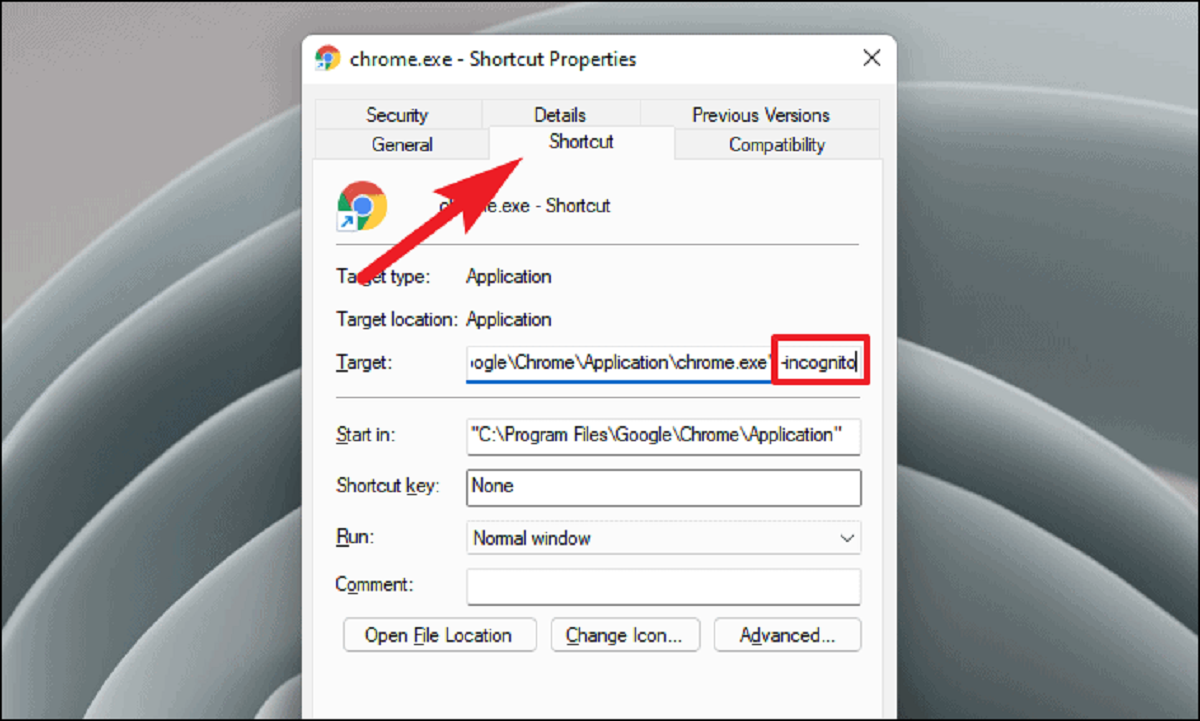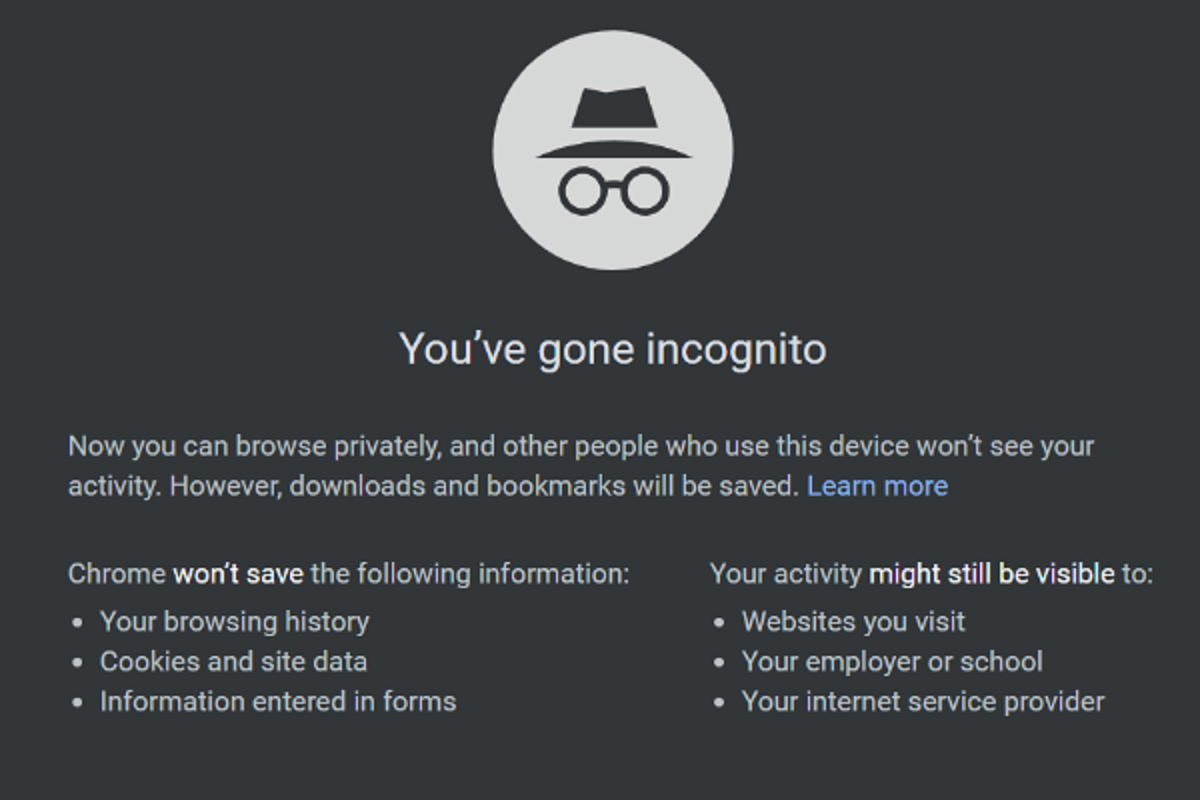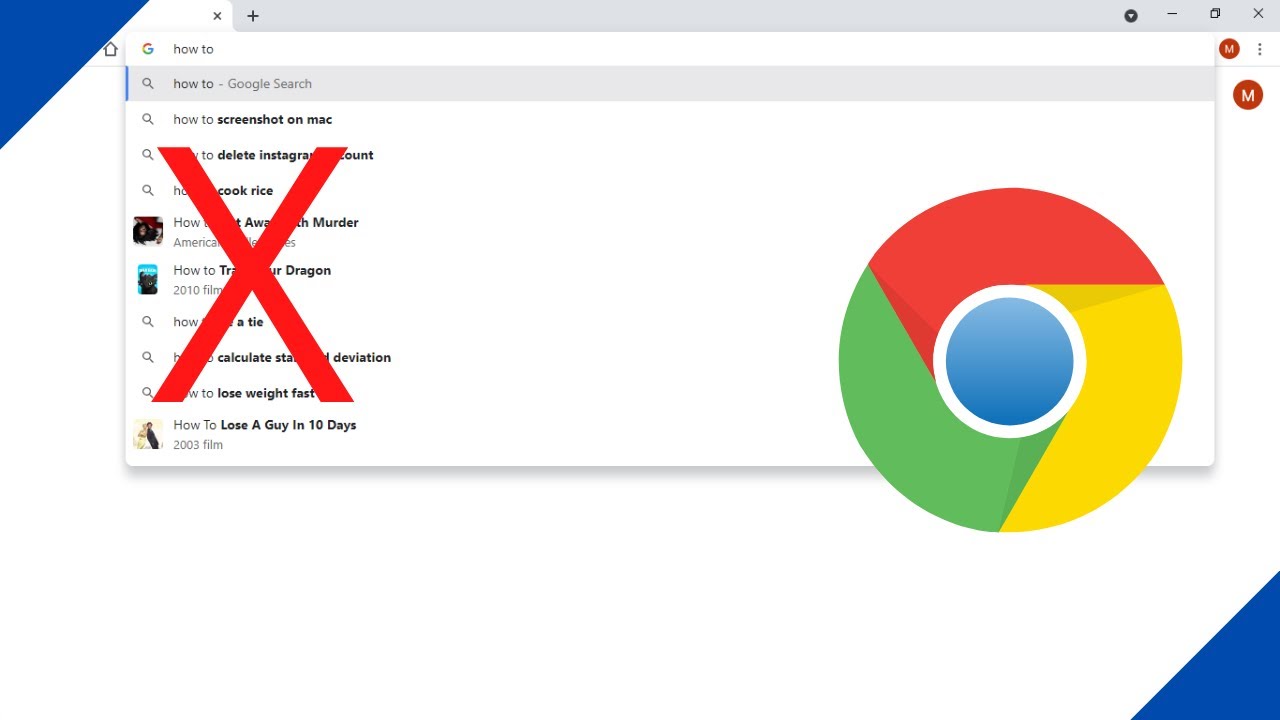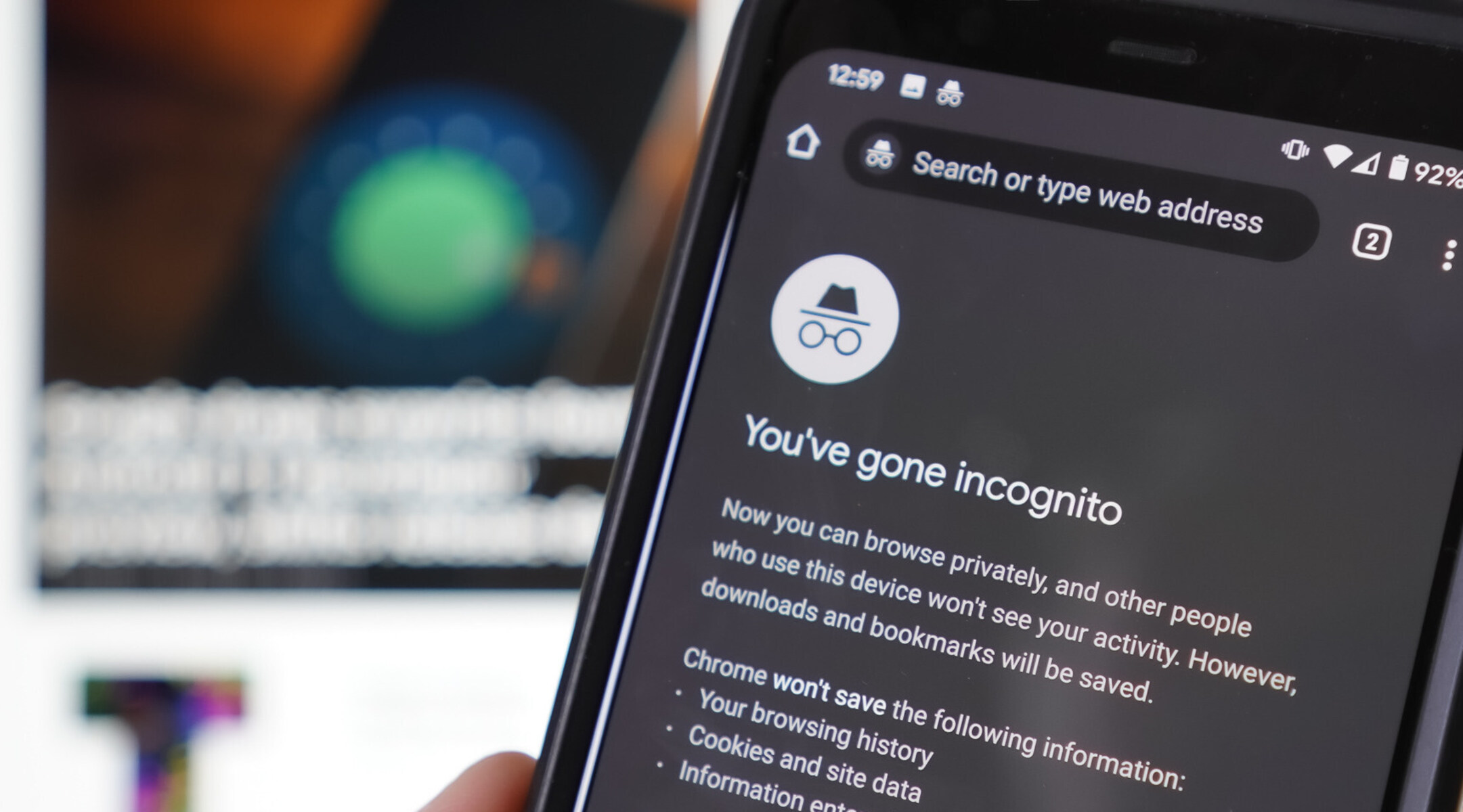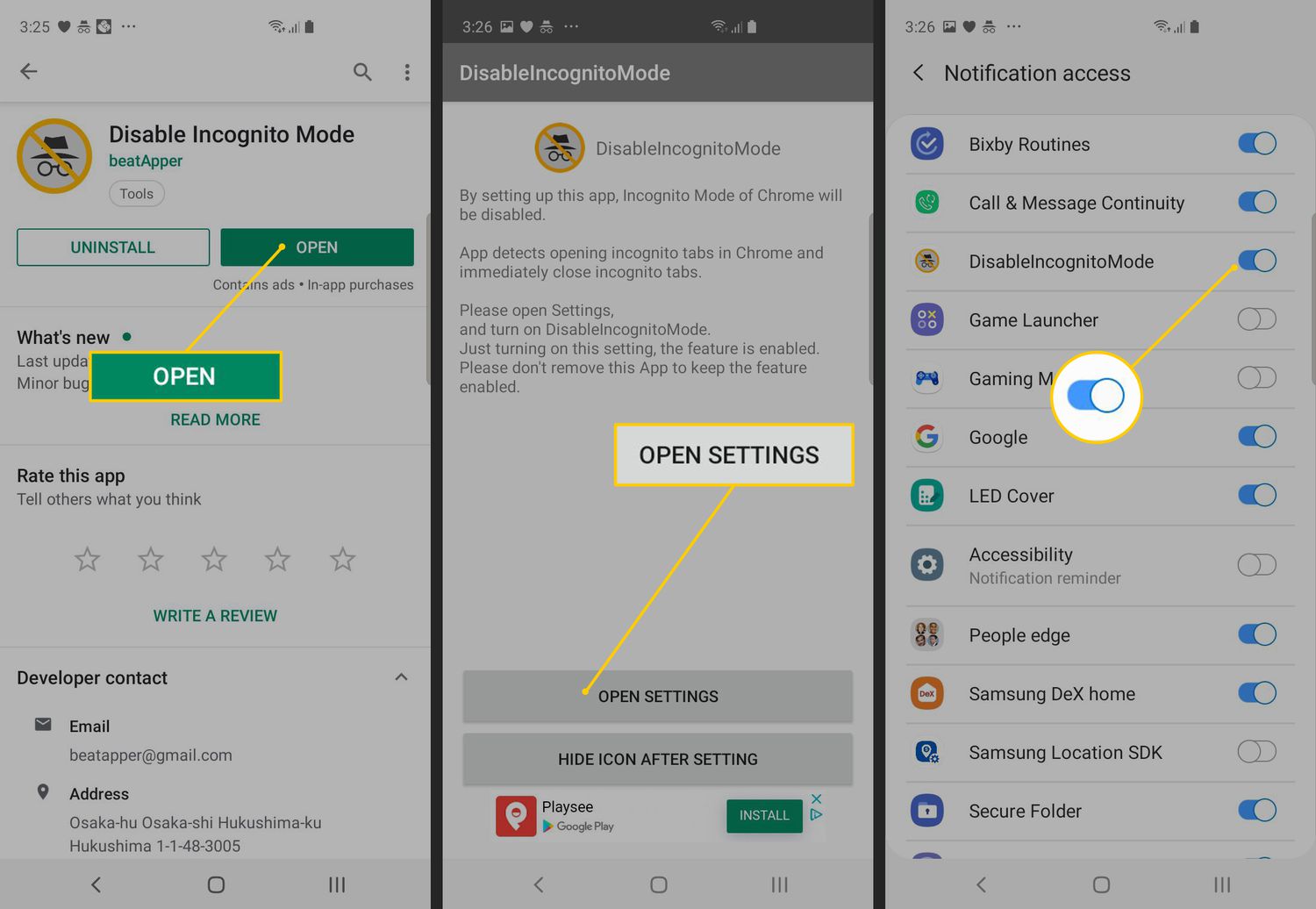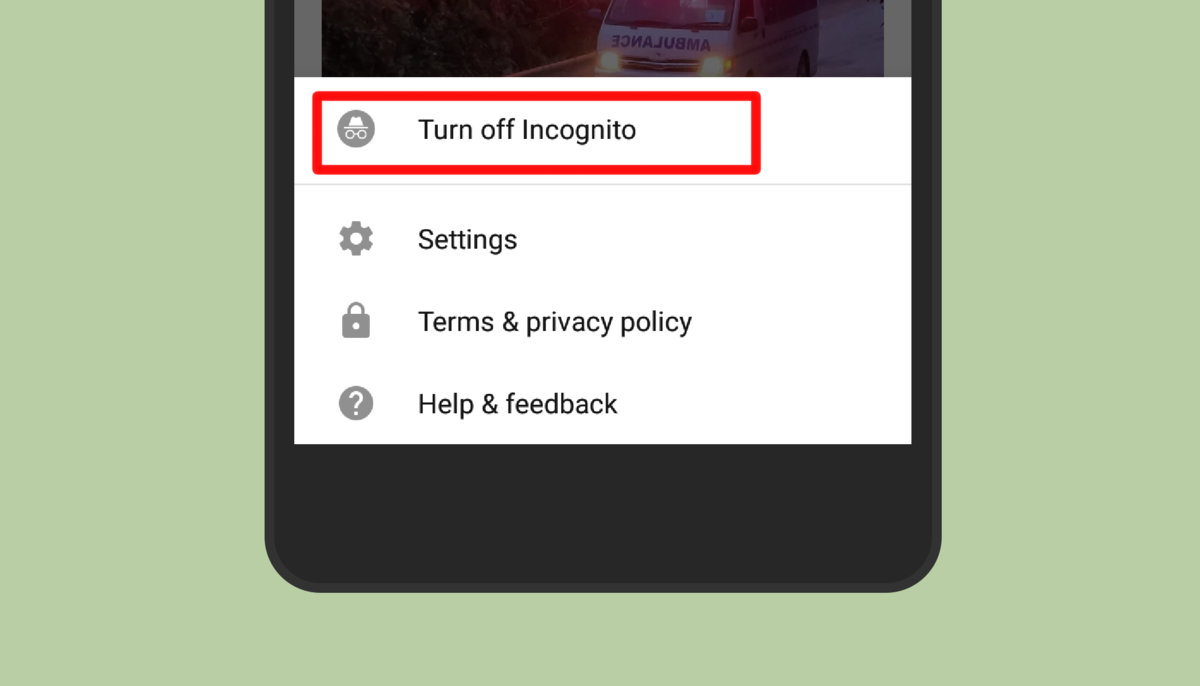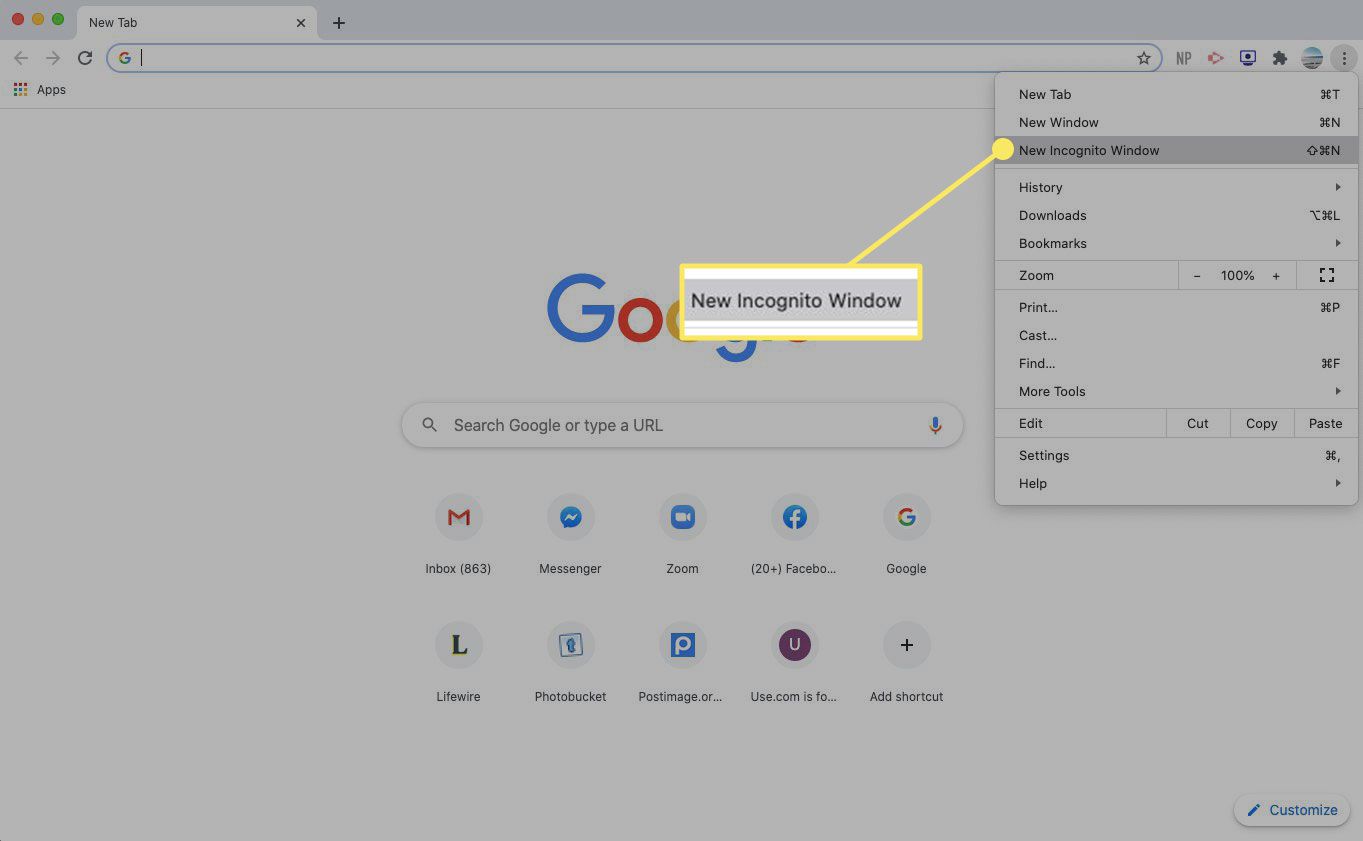Introduction
Welcome to the world of web browsing where you can effortlessly navigate through an ocean of information at the click of a button. As you surf the internet, you may come across various situations where you want to maintain your privacy and avoid leaving any traces of your online activities. This is where the Incognito Mode comes to your rescue.
Incognito Mode, also known as Private Browsing, is a feature available in most web browsers that allows you to browse the web without storing any history, cookies, or other data. When you use this mode, your browsing history is not logged, and any information you enter on websites, such as login credentials or form data, is not saved.
Have you ever wondered how convenient it would be if you could set Incognito Mode as the default mode in your Chrome browser? Well, this article is here to guide you through the process of making Incognito Mode your default browsing experience.
Setting Incognito Mode as the default browsing mode in Chrome offers a multitude of advantages. Firstly, it enhances your privacy by automatically opening new windows in Incognito Mode, without requiring you to switch modes each time. Secondly, it ensures that no traces of your browsing activities are left behind on your device, giving you peace of mind.
This guide will walk you through the step-by-step process of setting Incognito Mode as the default option in Chrome. By following these simple instructions, you can enjoy private browsing right from the moment you launch your browser.
What is Incognito Mode?
Incognito Mode is a feature available in web browsers, including Chrome, that allows you to browse the internet privately and discreetly. When you open a new incognito window, your browser operates in a way that doesn’t store any browsing history, cookies, or other site data. This means that once you close the window, all traces of your online activities during that session are erased, leaving no history behind.
Incognito Mode provides users with a temporary browsing session where they can navigate the web without worrying about their browsing history or data being saved. It is important to note, however, that while your browsing data is not saved locally, your internet service provider, employer, or the websites themselves may still track your online activities.
In Incognito Mode, websites you visit can still collect information about your visit, such as your IP address or the fact that you are browsing in incognito mode. Additionally, any bookmarks or downloads made during your incognito session will still be saved on your computer unless you manually delete them.
One of the key benefits of using Incognito Mode is that it allows you to maintain your privacy when using a shared computer or device. If you don’t want others with access to the same device to know what websites you have visited or what you have searched for, Incognito Mode ensures that your browsing activities remain private.
Incognito Mode can also be useful when you want to sign in to multiple accounts on the same website simultaneously. Since your browsing sessions are separate and isolated, you can log in to different accounts without having to sign out of the previous one.
It is important to remember that while Incognito Mode provides a level of privacy during your browsing sessions, it does not make you completely anonymous. Your internet service provider, network administrator, or the websites you visit can still track your activities. If you require a higher level of anonymity and security, additional measures such as virtual private networks (VPNs) or anonymous browsing tools may be necessary.
Why Set Incognito Mode as Default?
Setting Incognito Mode as the default browsing option in Chrome can offer several advantages and conveniences, making it a preferred choice for many users. Here are a few reasons why you might consider setting Incognito Mode as the default:
1. Enhanced Privacy: By setting Incognito Mode as the default, each new browsing session opens in a private window automatically. This means that your browsing history, cookies, and other temporary data will not be stored on your device. It provides an added layer of privacy, ensuring that no one with access to your device can trace your online activities.
2. Convenience: Making Incognito Mode the default browsing option saves you the trouble of manually opening a private window every time you launch your browser. It eliminates the need to switch modes, allowing you to effortlessly browse the web in a private and secure environment right from the start.
3. Security: Incognito Mode can be beneficial in preventing certain types of malware and spyware from being installed on your device. Since your browsing data and history are not stored locally, potential threats are less likely to target your online activities or personal information.
4. Testing and Development: If you are a web developer or designer, setting Incognito Mode as the default can be useful for testing and development purposes. It allows you to view websites or web applications as a new user would without any cached data or personalized settings influencing the results.
5. Separate User Accounts: Incognito Mode is particularly handy when there are multiple users sharing the same computer or device. Enabling Incognito Mode as the default option ensures that each user starts their browsing session in a private window, providing a clean slate and preventing user data from being shared or crossed over.
6. Avoiding Autofill Mishaps: By using Incognito Mode as the default, you can prevent any mishaps or embarrassing situations caused by autofill features. It ensures that your personal information, such as usernames, passwords, and addresses, are not automatically filled in on websites, reducing the risk of accidentally sharing sensitive data on a public computer.
With these benefits in mind, it’s easy to see why setting Incognito Mode as the default browsing option can be advantageous for privacy-conscious individuals, shared devices, and even professionals in the web development field. Let’s now explore how you can configure Chrome to automatically open in Incognito Mode.
How to Set Incognito Mode as Default in Chrome
If you prefer the convenience and privacy of Incognito Mode, you can easily set it as the default browsing option in Chrome. Follow these step-by-step instructions to configure your Chrome browser:
Step 1: Open Chrome Settings
Launch the Chrome browser on your device and click on the three vertical dots in the upper right-hand corner of the window. From the dropdown menu, select “Settings.”
Step 2: Access Advanced Settings
In the Settings page, scroll down until you see the “Advanced” option. Click on it to expand the advanced settings.
Step 3: Set Incognito Mode as Default
Scroll down further until you find the “Privacy and security” section. Look for the “Site settings” option and click on it.
In the Site Settings page, locate the “Cookies and site data” section and click on it.
Now, toggle the switch next to “Clear cookies and site data when you quit Chrome” to enable it. This setting ensures that when you close the browser, all browsing data, including cookies, will be deleted.
Step 4: Confirm Changes and Close Settings
Once you have enabled the “Clear cookies and site data when you quit Chrome” option, click the “Done” button to save your changes and close the Settings page.
That’s it! You have successfully set Incognito Mode as the default browsing option in Chrome. From now on, whenever you open a new window, it will automatically open in Incognito Mode, providing you with a private and secure browsing experience.
Remember, even though Incognito Mode helps protect your privacy by not saving your browsing history, it does not make you completely anonymous. Websites you visit, your internet service provider, and other entities can still track your activities. Therefore, exercise caution and employ additional privacy measures if needed.
Now that you know how to set Incognito Mode as the default in Chrome, take advantage of this feature to enhance your online privacy and browsing experience.
Step 1: Open Chrome Settings
The first step in setting Incognito Mode as the default browsing option in Chrome is to open the Chrome settings. Here’s how you can do it:
1. Launch the Chrome browser on your device by double-clicking the Chrome icon on your desktop or selecting it from the Start menu.
2. Once the Chrome browser is open, look for the three vertical dots in the upper right-hand corner of the window. Click on these dots to open the Chrome menu.
3. In the dropdown menu that appears, locate and click on the “Settings” option. This will take you to the Chrome Settings page.
By following these simple steps, you will be able to access the Chrome settings and proceed to the next steps in configuring Incognito Mode as the default browsing option.
Opening the Chrome settings gives you access to a wide range of options and preferences that you can customize to enhance your browsing experience. From here, you can configure various aspects of Chrome, including privacy settings, appearance options, and advanced preferences.
Now that you have opened the Chrome settings, you are ready to move on to the next step in setting Incognito Mode as the default. Continue following the guide to learn how to access the advanced settings in Chrome.
Step 2: Access Advanced Settings
Once you have opened the Chrome settings, the next step is to access the advanced settings. Follow these instructions to access the advanced settings in Chrome:
1. On the Chrome Settings page, scroll down to the bottom to view the available options. As you scroll down, you will come across several sections, including “Privacy and security,” “Autofill,” “Site settings,” and more.
2. Look for the section labeled “Advanced” and click on it. By clicking on the “Advanced” option, it will expand and reveal additional settings and preferences.
3. As you click on the “Advanced” option, you will see new sections and options appear below it. These advanced settings offer more control and customization options for your browsing experience.
Accessing the advanced settings in Chrome allows you to fine-tune your browsing preferences and explore additional features that may not be available in the basic settings menu. It provides you with more control over your privacy, security, content settings, and other advanced options.
By delving into the advanced settings, you can customize Chrome according to your specific needs and preferences. However, be cautious when modifying advanced settings, as some changes may have unintended consequences on your browsing experience or the performance of the browser.
Now that you have successfully accessed the advanced settings in Chrome, you are one step closer to configuring Incognito Mode as the default browsing option. Proceed to the next step to learn how to set Incognito Mode as the default in Chrome.
Step 3: Set Incognito Mode as Default
Setting Incognito Mode as the default browsing option in Chrome involves a few simple steps. Follow these instructions to configure Chrome to automatically open in Incognito Mode:
1. After accessing the advanced settings in Chrome, scroll down until you find the “Privacy and security” section. Within this section, look for the “Site settings” option and click on it.
2. In the Site Settings page, you will find various options related to website permissions and behavior. Scroll down until you locate the “Cookies and site data” section. Click on it to access the specific settings related to cookies and site data.
3. Within the “Cookies and site data” section, you will see different options that control how Chrome handles cookies and other site data. Look for the option that says “Clear cookies and site data when you quit Chrome” and toggle the switch next to it to enable this feature.
Enabling the “Clear cookies and site data when you quit Chrome” option ensures that every time you close the browser, all your browsing data, including cookies, will be deleted. This setting is essential for maintaining your privacy and preventing data accumulation.
By setting this option to “On,” Chrome will automatically delete all your browsing data whenever you exit the browser, including your browsing history and any other information stored during your online sessions.
Once you have enabled the “Clear cookies and site data when you quit Chrome” option, you are one step away from completing the process of setting Incognito Mode as the default browsing option in Chrome.
Now, let’s move on to the final step, where you will confirm your changes and close the settings to apply the new default configuration.
Step 4: Confirm Changes and Close Settings
After making the necessary configurations to set Incognito Mode as the default browsing option in Chrome, it is important to confirm your changes and close the settings to apply the new default configuration. Follow these simple steps to complete the process:
1. Once you have enabled the “Clear cookies and site data when you quit Chrome” option, take a moment to review your other settings in the advanced settings menu if needed. If there are any additional changes you wish to make, navigate through the different sections and modify the settings accordingly.
2. After confirming your changes, you can now close the Chrome settings. Click on the “X” button located in the top right-hand corner of the settings page to exit the menu.
3. The changes you made to the settings will be automatically saved once you close the settings page. Chrome will now remember your preference and automatically open new browsing windows in Incognito Mode, offering you a private and secure browsing experience by default.
With Incognito Mode set as the default, all future browsing sessions in Chrome will automatically start in the private mode, without leaving any traces of your online activities on your device. This provides an additional layer of privacy and security.
Remember, while Incognito Mode helps protect your privacy by not saving your browsing history, it is essential to remain cautious and practice safe browsing habits. Websites you visit, your internet service provider, and other entities may still be able to track your activities.
Now that you have successfully confirmed the changes and closed the settings, you can start enjoying the benefits of using Incognito Mode as your default browsing option in Chrome.
Congratulations! You have completed the process of setting Incognito Mode as the default in Chrome. Enjoy your private and secure browsing experience.
Conclusion
In conclusion, setting Incognito Mode as the default browsing option in Chrome offers numerous benefits, including enhanced privacy, convenience, and security. By following the simple steps outlined in this guide, you can easily configure Chrome to automatically open in Incognito Mode, ensuring that your browsing activities remain private and secure.
Incognito Mode, also known as Private Browsing, allows you to browse the web without storing any browsing history, cookies, or other data. It is particularly useful when you want to maintain your privacy, avoid leaving traces of your online activities, or prevent autofill mishaps on shared computers.
By setting Incognito Mode as the default, each new browsing session will automatically open in a private window, eliminating the need to switch modes manually. This saves time and ensures that you are always browsing in a private and secure environment right from the start.
Configuring Chrome to open in Incognito Mode by default involves accessing the Chrome settings, navigating to the advanced settings, and enabling the option to clear cookies and site data when you quit the browser. Once the changes are confirmed and the settings are closed, Chrome will remember your preference and start each new browsing session in Incognito Mode.
It is important to note that while Incognito Mode helps protect your privacy by not storing browsing data locally, it does not make you completely anonymous. Websites, internet service providers, and other entities may still track your activities.
In summary, setting Incognito Mode as the default browsing option in Chrome provides a seamless and private browsing experience. It gives you greater control over your online privacy and ensures that your browsing activities remain confidential. So, why wait? Take advantage of this feature and enjoy a secure and private browsing experience with Incognito Mode in Chrome.







